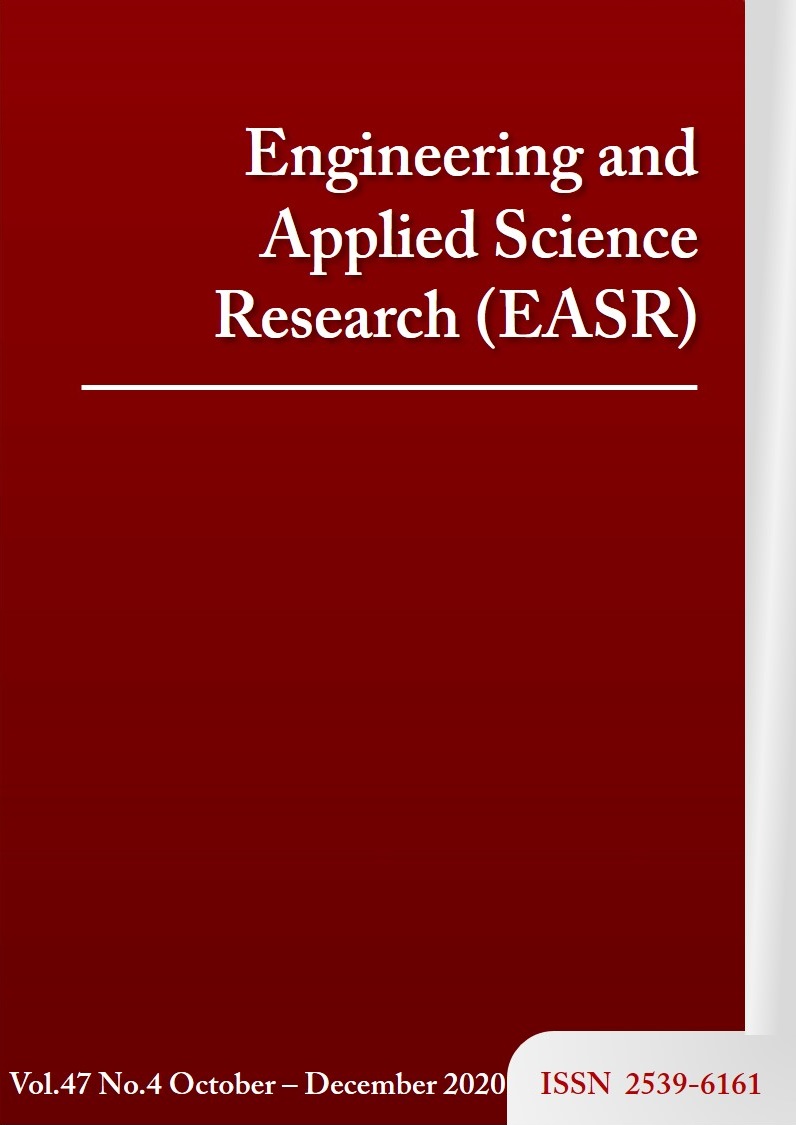A model of latent class multinomial logit to investigate motorcycle accident injuries
Main Article Content
Abstract
The analysis of road traffic accidents will be more complicated with the existence of heterogeneity in the raw data of traffic accident. This study conducts a specific attention to unobserved heterogeneity issues by classifying homogeneous attributes of two different accident data classes. A latent class approach was used to investigate the contributing factors and their influences of motorcycle accident injury outcomes. The data set from 2010 to 2015 consisting 1061 motorcycle accident injuries on Denpasar-Gilimanuk and Denpasar-Singaraja national road networks in Tabanan Regency, Bali were employed as the case study. This study found that male motorists and head on collisions significantly influencing fatal motorcycle injuries. In addition, collisions between motorcycle and the other types of motor vehicles, day time accidents, male motorists at fault, right angle and head on collisions significantly associated with serious motorcycle accident injuries. This result may represent many primary factors which considerably diverge across a traffic accident injury observation. The contributing factors identified in this study were further discussed and some countermeasures for reducing the motorcycle accident injuries were proposed.
Article Details
This work is licensed under a Creative Commons Attribution-NonCommercial-NoDerivatives 4.0 International License.
References
World Health Organization. Risk Factors for Road Injuries [Internet]. Geneva: WHO; 2018 [cited 2020 Feb 10]. Available from: https://www.who.int/violence_injury_prevention/road_traffic/activities/roadsafety_training_manual_unit_2.pdf.
de Ona J, López G, Mujalli R, Calvo FJ. Analysis of traffic accidents on rural highways using latent class clustering and bayesian networks. Accid Anal Prev. 2013;51:1-10.
Mannering FL, Bhat CR. Analytic methods in accident research: methodological frontier and future directions. Anal Methods Accid Res. 2014;1:1-22.
Mannering FL, Shankar V, Bhat CR. Unobserved heterogeneity and the statistical analysis of highway accident data. Anal Methods Accid Res. 2016;11:1-16.
Russo BJ, Savolainen PT, Schneider IV WH, Anastasopoulos PC. Comparison of factors affecting injury severity in angle collisions by fault status using a random parameter bivariate ordered probit model. Anal Methods Accid Res. 2014;2:21-9.
Shaheed MSB, Gkritza K. A latent class analysis of single-vehicle motorcycle crash severity outcomes. Anal Methods Accid Res. 2014;2:30-8.
Shaheed MSB, Gkritza K, Zhang W, Hans Z. A mixed logit analysis of two-vehicle crash severities involving a motorcycle. Accid Anal Prev. 2013;61:119-28.
Depaire B, Wets G, Vanhoof K. Traffic accident segmentation by means of latent class clustering. Accid Anal Prev. 2008;40(4):1257-66.
Greene WH, Hensher DA. A latent class model for discrete choice analysis: contrasts with mixed logit. ransp Res Part B. 2003;37(8):681-98.
Huang Z, Gao Z, Yu R, Wang X, Yang K. Utilizing latent class logit model to predict crash risk. The 16th IEEE/ACIS International Conference on Computer and Information Science (ICIS); 2017 May 24-26; Wuhan, China. USA: IEEE; 2017. p. 161-5.
Statistics of Bali Province. Bali in Figures 2019 [Internet]. Denpasar: Statistics of Bali Province; 2019 [cited 2020 Feb 10]. Available from: https://bali.bps.go.id/statictable/2018/04/13/91/daftar-nama-dan-panjang-jalan-nasional-di-bali-2018.html.
Bali Regional Police. Accident Data Report. Denpasar : Bali Regional Police; 2016.
Islam Md H, Hua LT, Hamid H, Azarkerdar A. Relationship of accident rates and road geometric design. IOP Conf Ser: Earth Environ Sci. 2019;357:012040.
Nylund KL, Asparouhov T, Muthén BO. Deciding on the number of classes in latent class analysis and growth mixture modelling: a monte carlo simulation study. Struct Equ Modeling. 2007;14(4);535-69.
Behnood A, Roshandeh AM, Mannering FL. Latent class analysis of the effects of age, gender, and alcohol consumption on driver-injury severities. Anal Methods Accid Res. 2014;3-4:56-91.
Wegman F. The future of road safety: a worldwide perspective. IATSS Res. 2017;40(2):66-71.
World Health Organization. Global status report on road safety [Internet]. Geneva: WHO; 2018 [cited 2020 Feb 10]. Available from: https://www.who.int/publications-detail/global-status-report-on-road-safety-2018.
Department for Transport. Reported road casualties in Great Britain: notes, definitions, symbols and conventions [Internet]. UK: Department for Transport; 2017 [cited 2020 Feb 10]. Available from: https://assets.publishing.service.gov.uk/government/uploads/system/uploads/attachment_data/file/743853/reported-road-casualties-gb-notes-definitions.pdf.
Al-Ghamdi AS. Using logistic regression to estimate the influence of accident factors on accident severity. Accid Anal Prev. 2002;34(6):729-41.
Chin HC, Haque Md M. Effectiveness of red-light cameras on the right-angle crash involvement of motorcycles. J Adv Transport. 2012;46(1):54-66.
Waseem M, Ahmed A, Saeed TU. Factors affecting motorcyclists’ injury severities: an empirical assessment using random parameters logit model with heterogeneity in means and variances. Accid Anal Prev. 2019;123:12-9.
Ding C, Rizzi M, Strandroth J, Sander U, Lubbe N. Motorcyclist injury risk as a function of real-life crash speed and other contributing factors. Accid Anal Prev. 2019;123:374-86.
Umar RSR, Mackay MG, Hills BL. Preliminary analysis of exclusive motorcycle lanes along the federal highway F02, Shah Alam, Malaysia. IATSS Res. 1995;19(2):93-8.
Mama S, Taneerananon P. Effective motorcycle lane configuration Thailand: a case study of southern Thailand. Eng J. 2016; 20(3):113-21.
Le TQ, Nurhidayati ZA. Study of motorcycle lane design in some Asian countries. Procedia Eng. 2016;142:292-8.
Kitamura Y, Hayashi M, Yagi E. Traffic problems in Southeast Asia featuring the case of Cambodia's traffic accidents involving motorcycles. IATSS Res. 2018;42(4):63-170.
Haque MM, Chin HC. Right-angle crash vulnerability of motorcycles at signalized intersections: mixed logit analysis. Transport Res Rec. 2018;2194(1):82-90.



